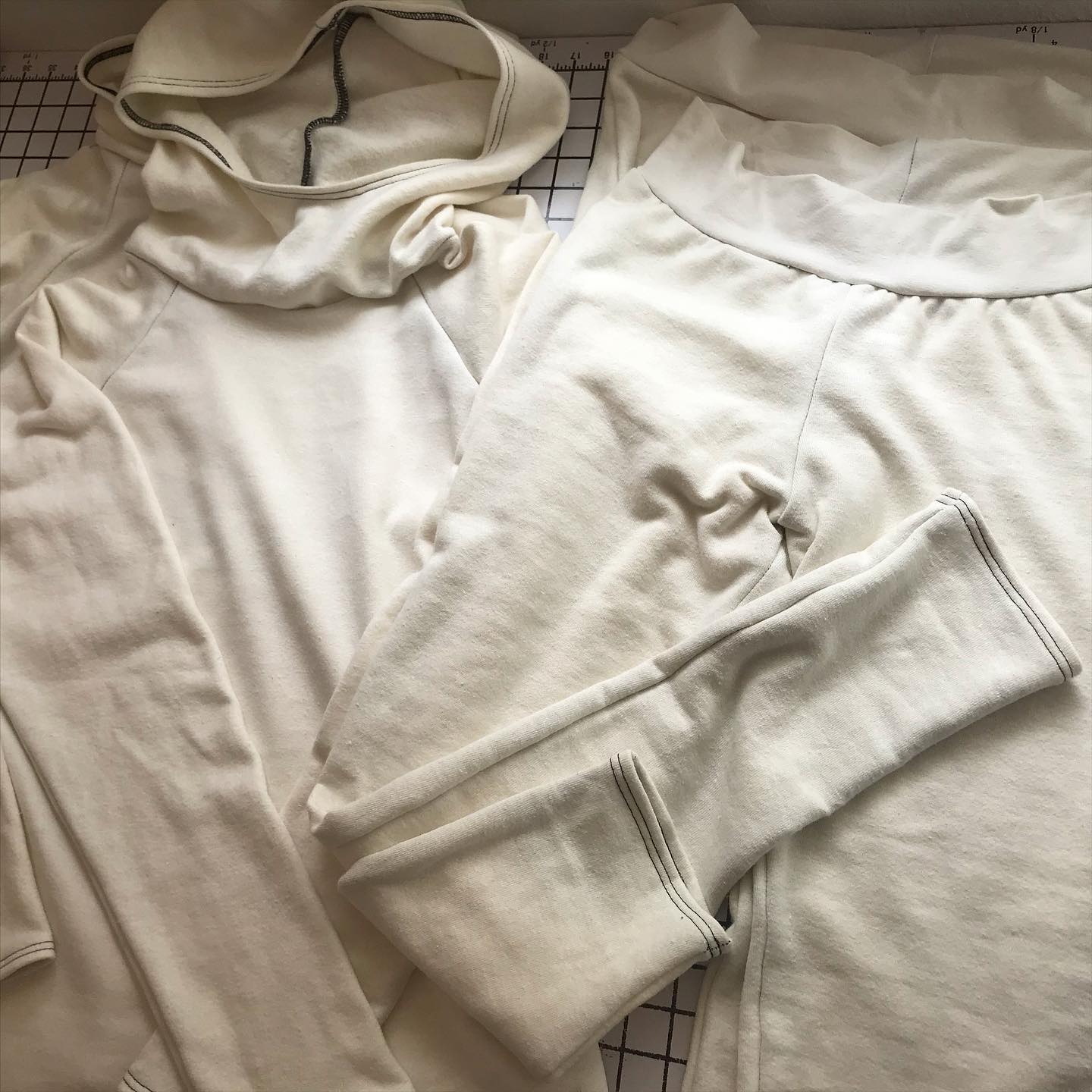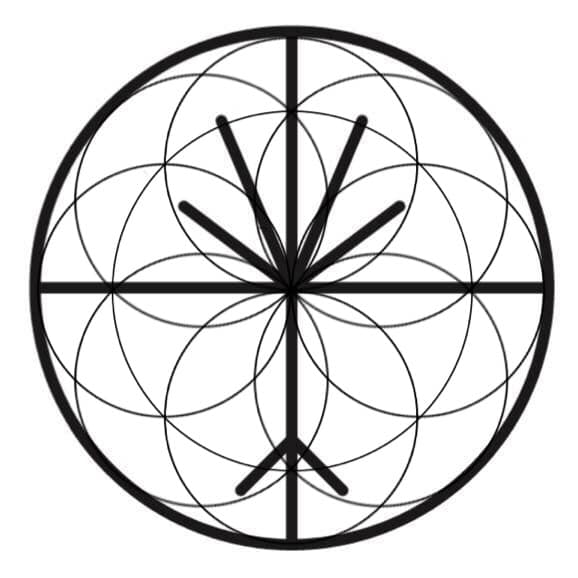INSPIRATION
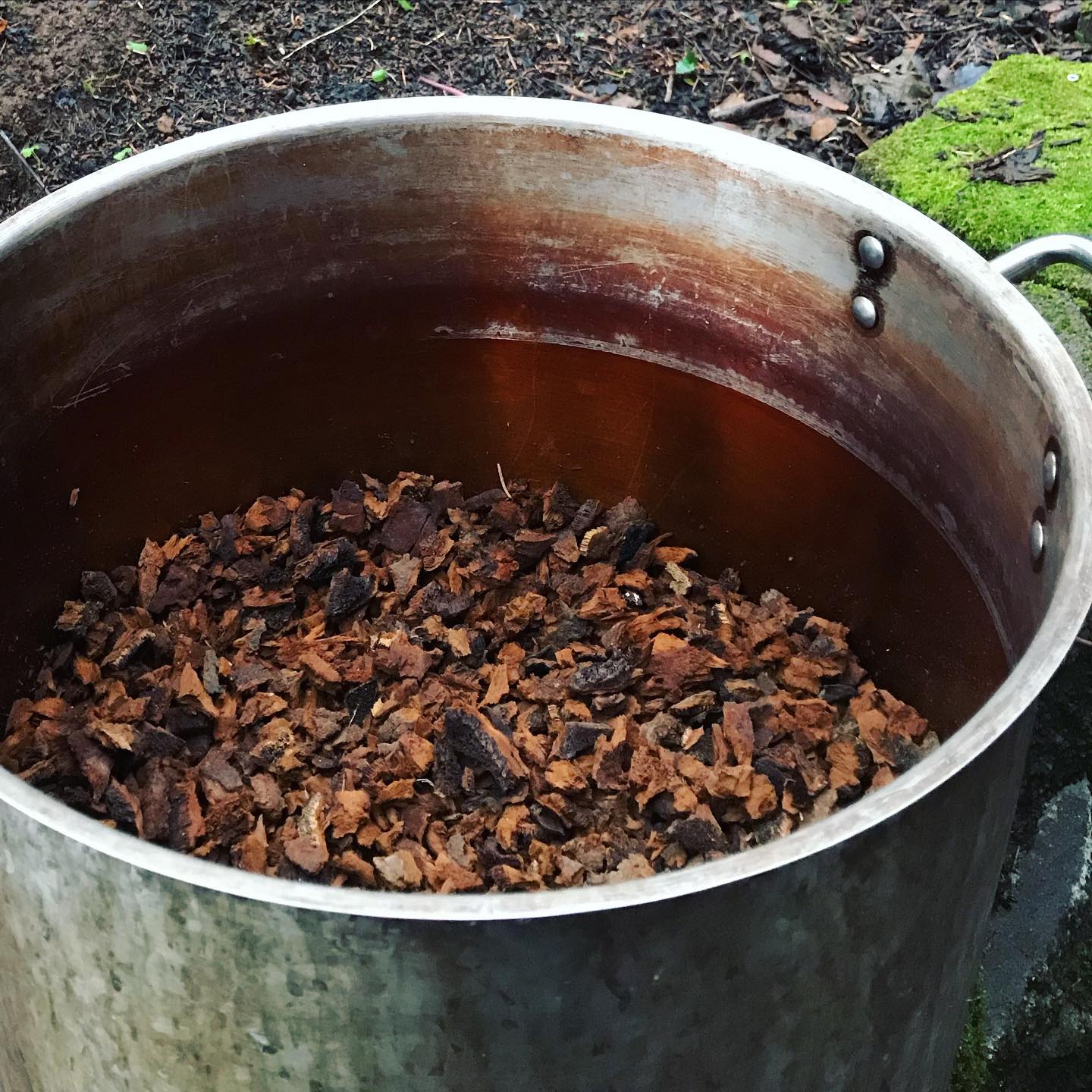
2020 was a year of adapting and overcoming. The stress and exhaustion of the global pandemic, social injustices of the broken system we live in surfacing and distinct division in our country has been unfathomable. The one thing that kept me sane and steadily moving forward the year that the world stopped has been my bicycle. I feel so lucky to live in a region where trails are abundant and I can escape into the forest for a bike ride to reset and recharge - this past year especially. After the Mycology + Color workshop I attended in October with Julie Beeler and Rachel Zoller - I found myself discovering new mushroom patches on my local trails almost daily! I could not believe how many mushrooms I probably rode past all summer without even noticing them. The saying goes..."the more you look, the more you see" - and isn't that the truth. I discovered my local trails were not only abundant in edible mushrooms, but also dye specific mushrooms! Phaeolus schweinitzii is more commonly known as the "dyers polypore" or "velvet top fungus". It's a prevalent dye mushroom that is actually a pathogen producing butt rot on conifers. Between the months of October-December, riding my mountain bike over roughly 400 miles of single track, and sometimes only collecting one or two mushrooms a ride - I foraged enough dyers polypore for a dye project. I collected almost two pounds of dyers polypore (dried) and finally cooked them up and dyed a very special batch of merino wool to wrap up the year of 2020. The colors produced by the fungus were even better than I thought they would turn out. I dyed two pieces of heavy weight merino wool and one piece of micro light merino wool.
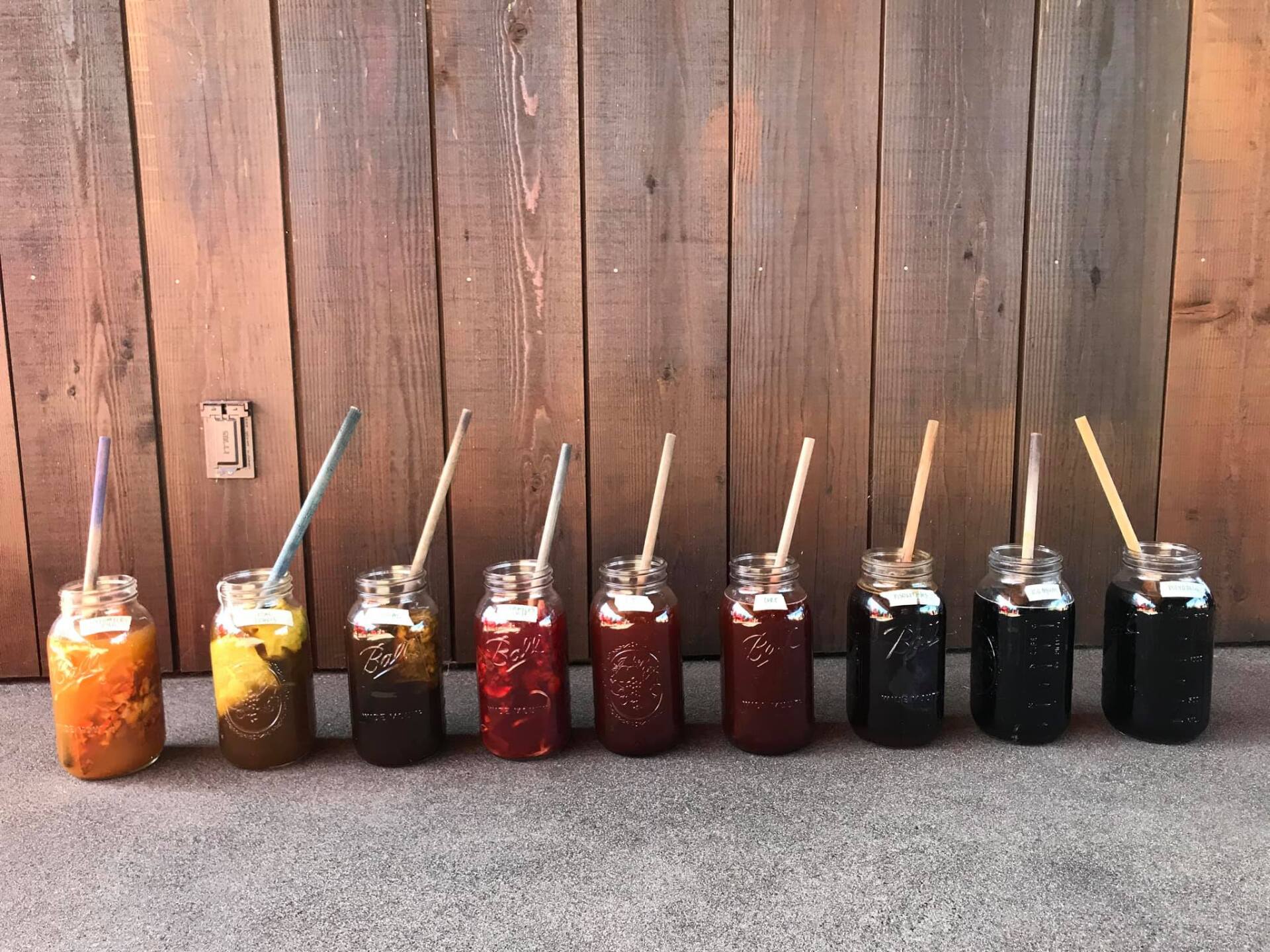
This past weekend I was lucky to attend a workshop that combined two of my favorite things - mushrooms and color. It was called Mycology + Color, hosted by Wildcraft Studio with teachers Julie Beeler and Rachel Zoller. I spent the weekend with a small group learning about how to identify dye specific mushrooms and how to extract color to dye fiber with specific mushrooms. It was a two day workshop and the first day was spent foraging with Rachel Zoller and learning how to identify dye specific mushrooms. Between the group of students we were able to harvest eight different kinds of dye mushrooms from the one day spent in the forest! The second day of the workshop was spent with Julie Beeler at her home studio called Bloom & Dye - where she runs her dye specific flower farm and hosts natural dye workshops. We spent the day learning how to extract color to dye fabric with twelve different types of mushrooms, including the eight we found locally! Julie went over how to prepare each mushroom, what modifiers each mushroom liked to achieve maximum palette potential and so much more. I was humbled to harvest some dye mushrooms and expand my skills and knowledge about two of my favorite things. It's amazing to know the spectrum of colors achievable all from fungus. If you plan on attending this workshop in the future - sign up ASAP - because it sells out super quick every year!

Some of you may have already seen some of the changes evolving with this small business. Shungite stone infused seams are officially DISCONTINUED! Custom orders are officially closed for the foreseeable future, as I focus on ready to ship pieces instead. Styles have shifted to more athletic friendly designs to accommodate my (once again) active lifestyle, that I have worked SO hard to get back to. As I have been healing my physical body over the last two years from now multiple sports injuries - this creative outlet has helped me cope with so much change that's occurred on my personal path. I am forever grateful for the growth and continued support. MORE LOVE MORE LIFE -Morgan
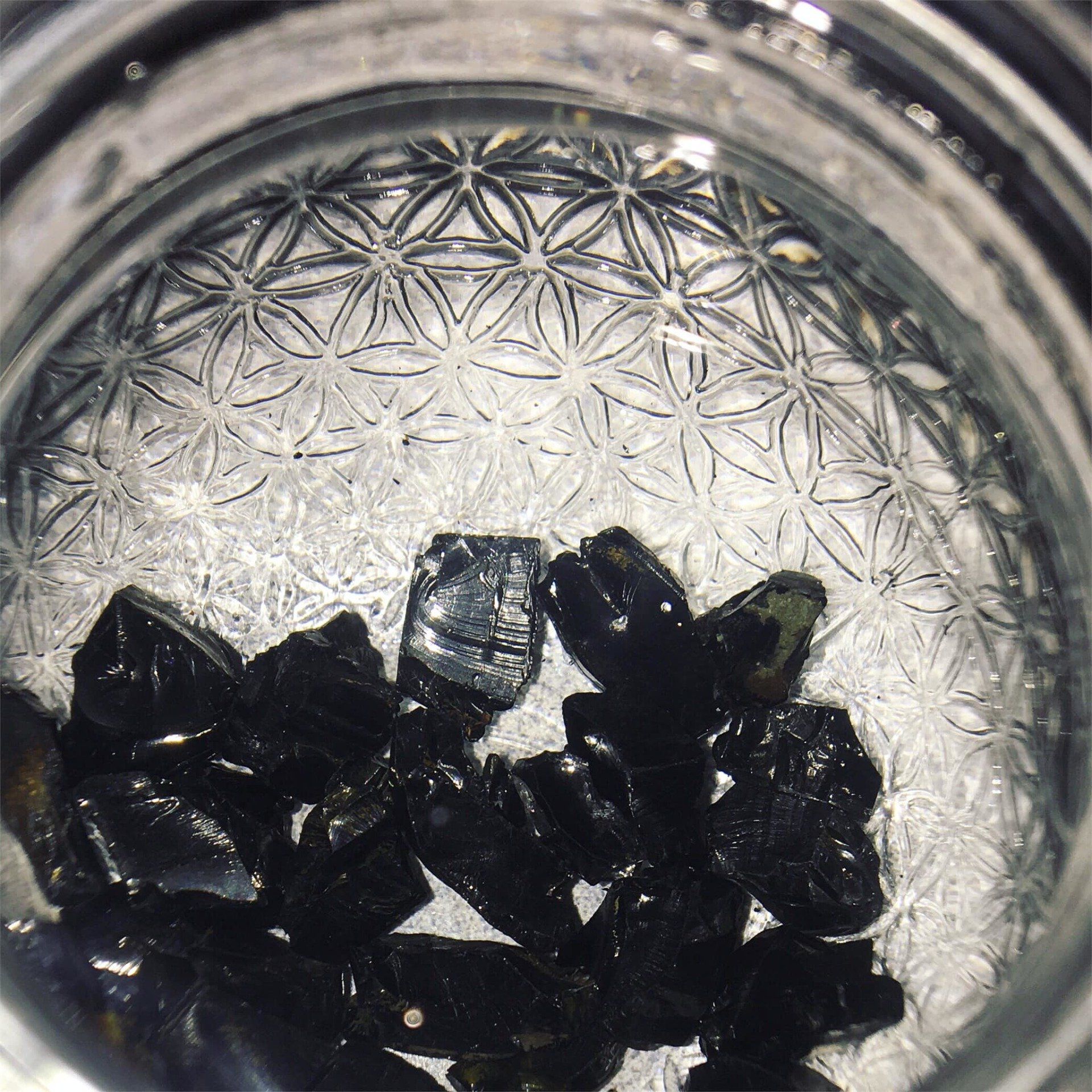
Did you know Shungite has the ability to purify water? Because of Shungite's unique molecular makeup, it holds many healing and purifying properties. Shungite is made up of fullerenes - essentially crystalline carbon molecules. These fullerenes are believed to be the most powerful antioxidants that can improve immune system function, cardiovascular function, shield cells from the effects of free radicals, as well as neutralize the negative impacts of harmful artificial EMF waves/radiation. Shungite is the only natural source of fullerenes known on planet earth, with the exception of a few meteorites. ☄️ Because of Shungites unique structure, fullerenes grab onto and kill a variety of bacteria, viruses, pathogens, chemicals such as chlorine , fluoride and even radioactive particles! The benefits of Shungite water date all the way back to 18th Century Russia with Peter the Great. After his soldiers drank water from a spring that ran through the Shungite deposit - he noticed they recovered faster than normal from injury and illness. Peter the Great actually constructed a Shungite healing spa in Lake Onega for his soldiers to reap the healing benefits of this magical mineral! How to make your own Shungite water... I recommend using the highest grade ELITE SHUNGITE (98% carbon) stones for water purification! cleanse stones by rinsing thoroughly with boiling water, rubbing with your hands or tooth brush to clean - once your stones rinse clear water and no black residue is coming off - charge stones in direct sunlight after cleansing - use a glass vessel for infusions 100 grams of Elite Shungite stones :: per 2 liters of water infusion time :: 24-72 hours (I do a 24 hour infusion and drink a glass daily, then refill so it's ready for the next day) DRINK GIVE THANKS REFILL REPEAT
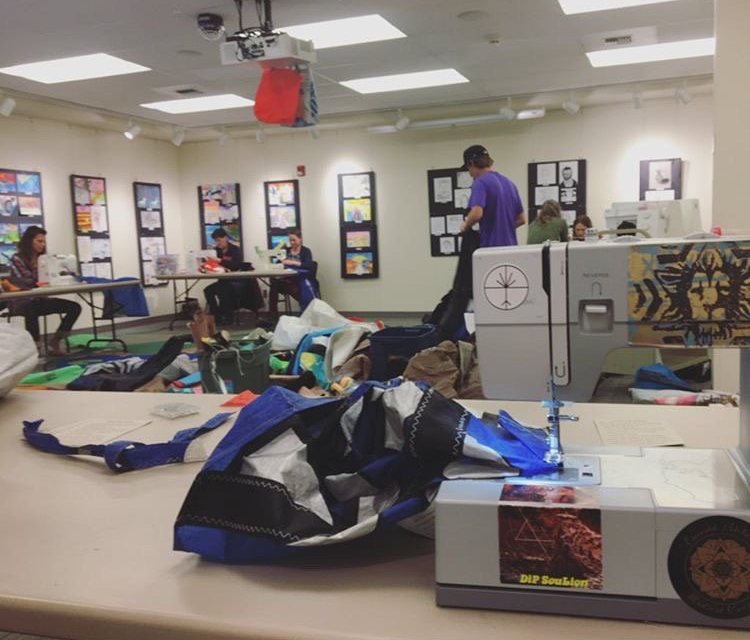
My good friend, Pam Springer, started this awesome local project known as "Ban The Bags" - a volunteer based upcycling art education program with White Salmon schools - teaching groups of youth how to sew and upcycle old sails from kite boards, sailboats and windsurfers into re-usable grocery bags. Living in the Columbia River Gorge, a world renown wind sports destination - there is a plethora of damaged or defected sails that athletes often end up throwing away. Last spring I was introduced to the project and attended my first Ban The Bags "sewathon", where a group of locals gathered at the library to sew as many upcycled re-usable grocery bags as we could. The bags we sewed were donated to our local grocery store to sell, and the profits donated back to our local school district. There were people who showed up to the event who had basic sewing experience, to professional local sewers and seamstresses, to people who just wanted to help cut bag bodies and straps. We constructed the bag bodies from up cycled sails and the straps of the bags were made from up cycled lumber straps donated from Tum-A-Lum Lumber. The bags are not just re-usable grocery bags, they also come with a set of simple instructions to create your own re-usable grocery bag with a simple pattern and straight forward directions. The bags were named "Green Bags" in memory of Gorge local, Laura Green. When this project was started, the city of White Salmon had not yet banned single use plastic grocery bags, even though it was clear that is what the community wanted. I am proud to announce that our town has now officially banned single use plastic grocery bags! Stay tuned for more Ban The Bags workshop and sewathon dates/info on my EVENTS page to get involved.
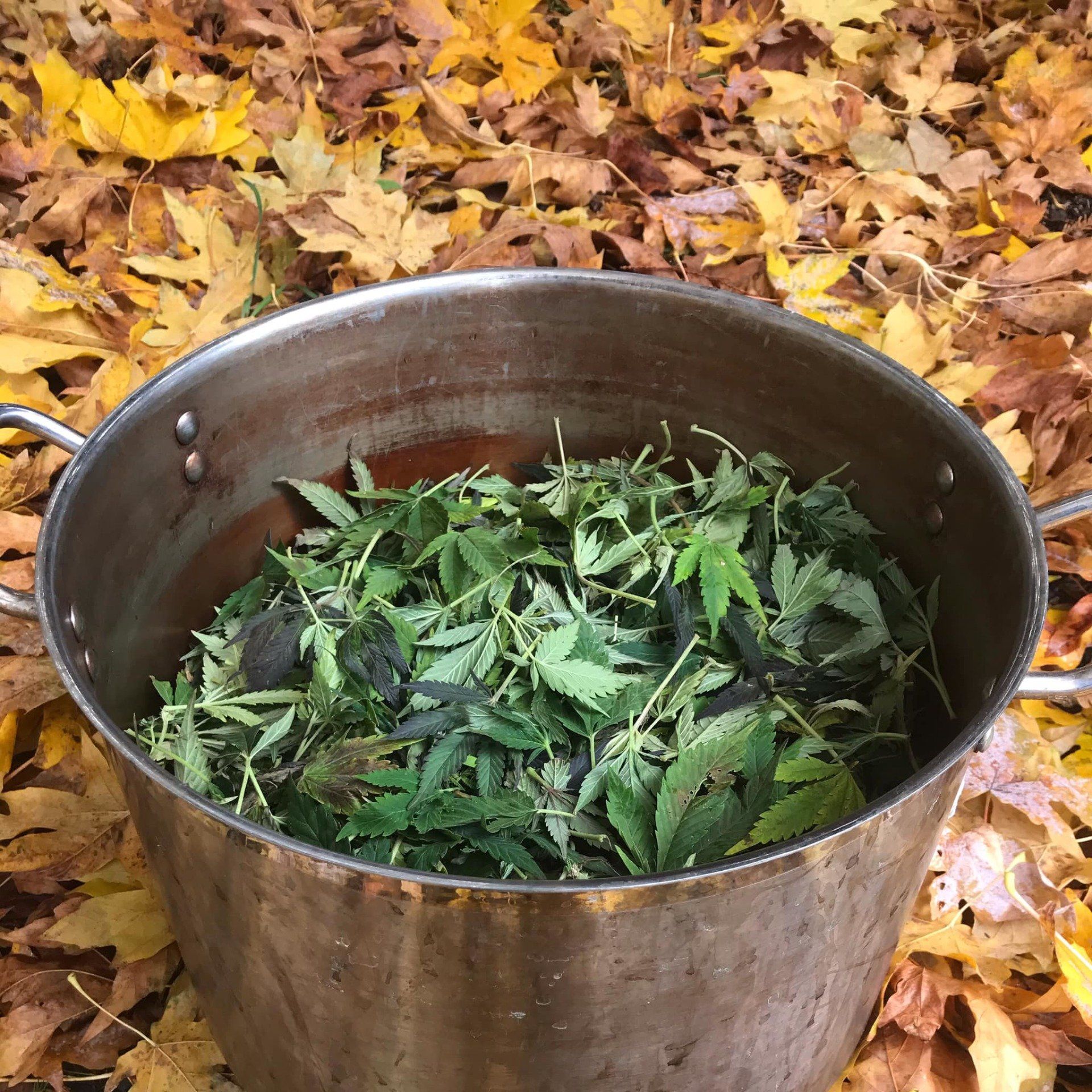
Croptober - one of my favorite times of the year. I have wanted to eco print with ganja leaves for a long time, but never had time for it until this past fall. I had so many big leaves leftover that weren't nice enough to print, so I decided to cook 'em up and see what color I could extract. I knew it was either going to be a green or yellow...and it turns out cannabis leaves make a beautiful, soft, buttery yellow - so similar to the yellow extracted from yarrow (that of course can be shifted to a green). Hemp fabric dyed with cannabis leaves...yes please!
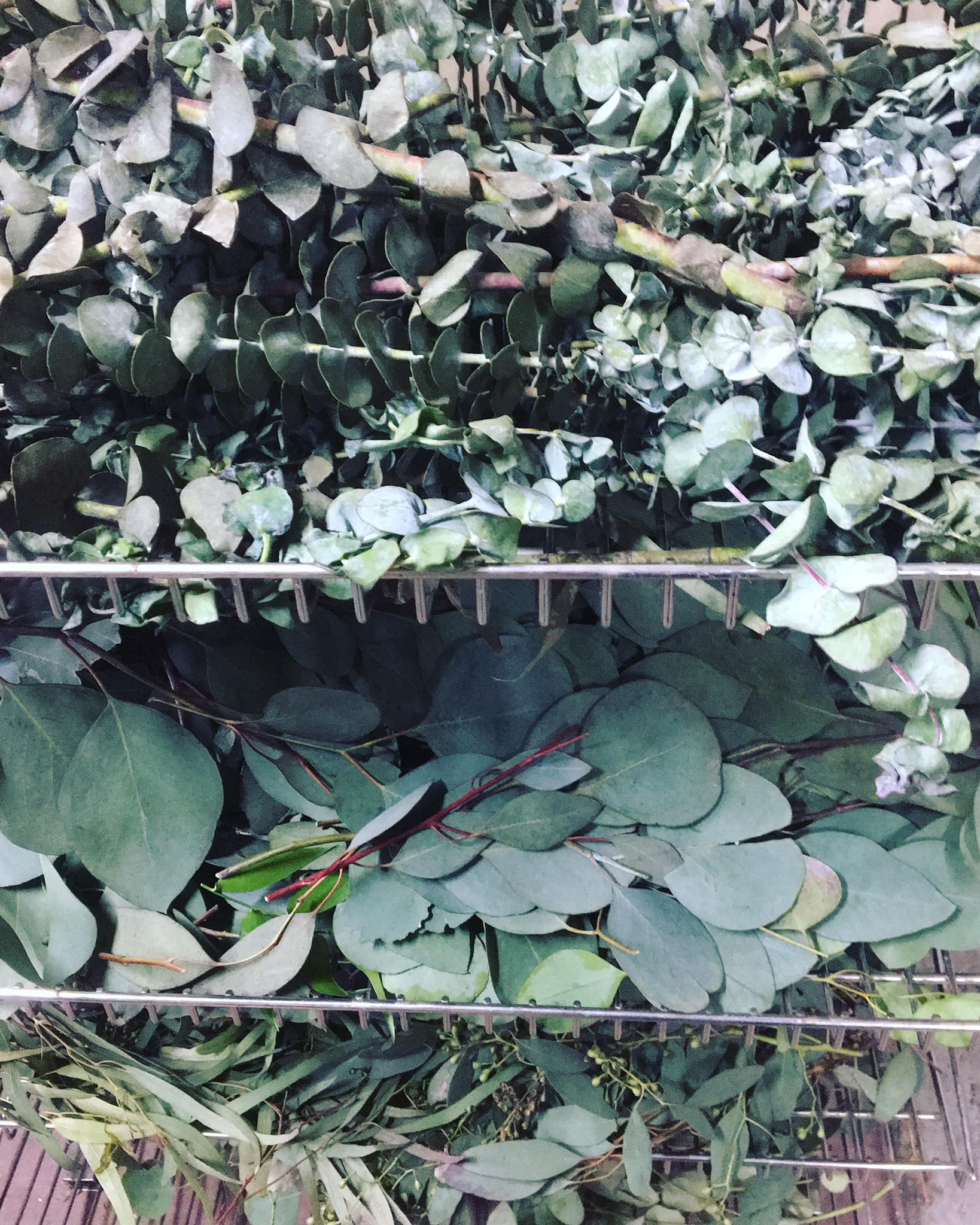
Reduce, reuse, recycle - at all possible moments! I feel lucky to have saved all of this beautiful eucalyptus from going straight into the trash. I catered a wedding last spring, and the couple who got married had a ton of extravagant eucalyptus decorations throughout the venue. As we were setting up for the event, I noticed the eucalyptus and asked the catering manager what they usually did after the wedding with decorations. She told me sometimes the bride keeps them, and other times they are just thrown away. I told her if they want to throw out any of the decorations that I would gladly take them home and upcycle the eucalyptus to my dye stock. She remembered I asked about the decorations and at the end of the night asked the bride and groom if I could take the plant decorations to re-purpose. The people who got married were excited I wanted to re-purpose their decorations and gladly gave me a giant contractor bag full of not one, but five different varieties of eucalyptus!!! Did you know there are over 700 varieties of eucalyptus in the world?!?!? Eucalyptus is an amazing natural dye resource. It is great for eco printing, and can be cooked down and made into color baths too. I ended up printing some of the eucalyptus onto a small batch of crop tops, matching skorts and hats. I also cooked some up and combined it with yarrow and iron to get a beautiful sagey green! Because I took the time to properly dry and store the eucalyptus, I have a back stock of leaves ready for my next project. To dry the eucalyptus I simply hung it in my garage and laid some on drying grids for a couple days. When it was cured, I organized it by variety and toted it up until next time!
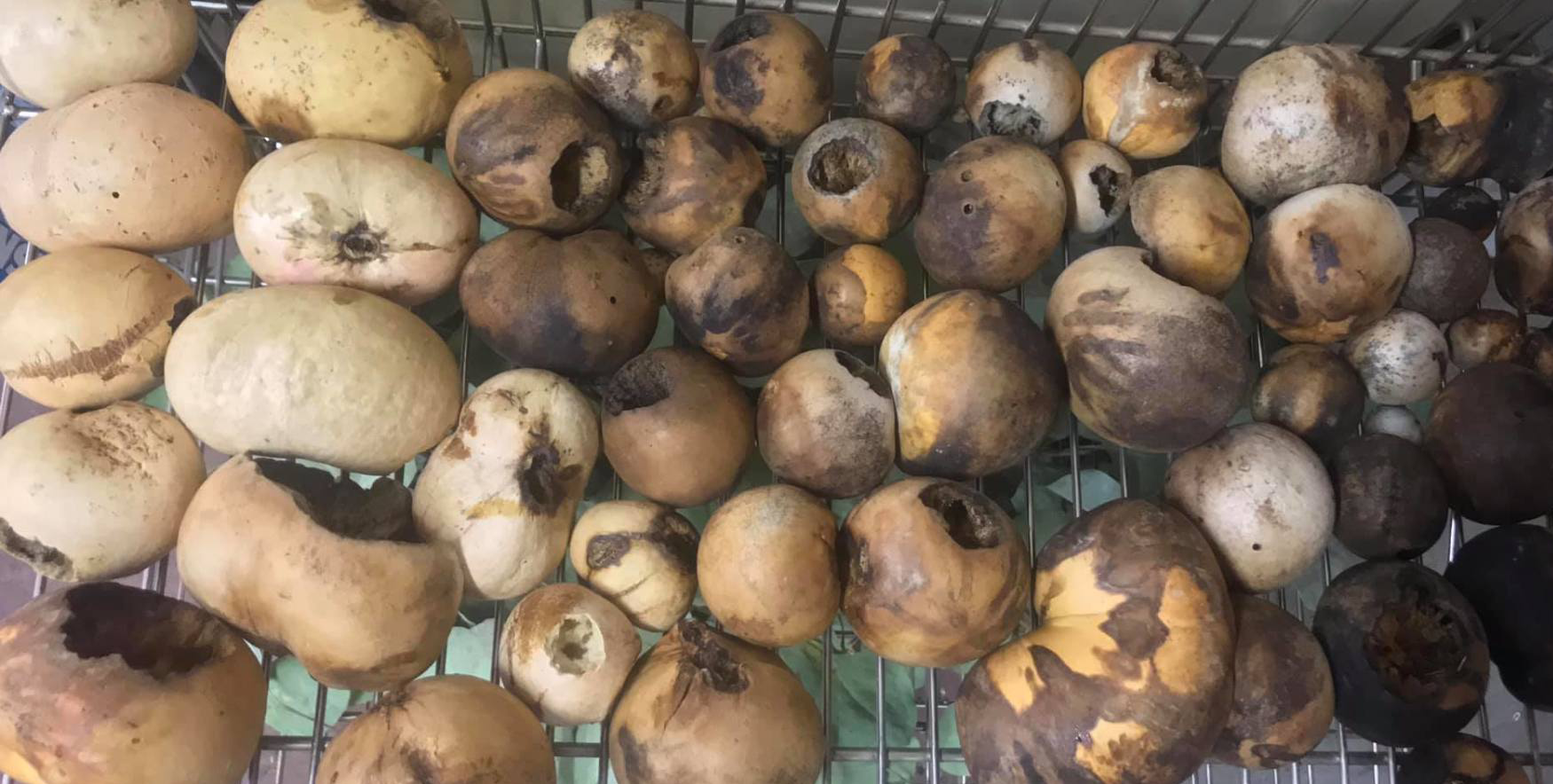
Last year I got back to my roots and spent more time in the saddle than I have in a long time...and I even combined my love of horses and natural dyes and started harvesting local dye resources with the help of my four legged friends. From a variety of plants, leaves, mushrooms, lichen, oak galls - the forests of the Pacific North West are abundant in natural dye resources. I had read about oak galls and learned more about them at natural dye workshops, but had not had the chance to work with them until last summer. I was ecstatic when I realized the land we were exploring on horseback was so rich with oak galls! I felt like a kid on a treasure hunt. When I would spot an abundance of oak galls on the ground I would hop off to collect some. The horses make great helpers harvesting oak galls, because they give you an elevated approach to harvesting younger galls that are still high up in the tree. Sometimes I could even just snatch them off branches as we rode by! (I knew my years of 4-H and Indiana flag racing skills would come in handy one day...) So what are oak galls anyways??? Oak galls are natures eldest and richest source of tannin. Tannin is a valuable compound for natural dyers. Oak galls can be used as a mordant and a dye, which is a unique quality for natural dyes. Oak galls are formed when a parasitic wasp lays eggs in the oak trees. This triggers a response by the oak tree as a form of defense when the parasitic wasps lay their larvae in the trees. The oak trees end up producing a high amount of tannin which turns into a bulge like looking growth. These growths, that are known as oak galls actually house the wasps until their time comes to head out into the world! Nature is truly amazing. Harvesting Tips :: before harvesting oak galls that are still on the tree - make sure the wasps are not still inhabiting the galls - look for the holes in the oak galls to know they are safe to take. If there are holes, that means the wasps have vacated. Young oak galls are richest in tannin - the lighter the color, the younger the galls!
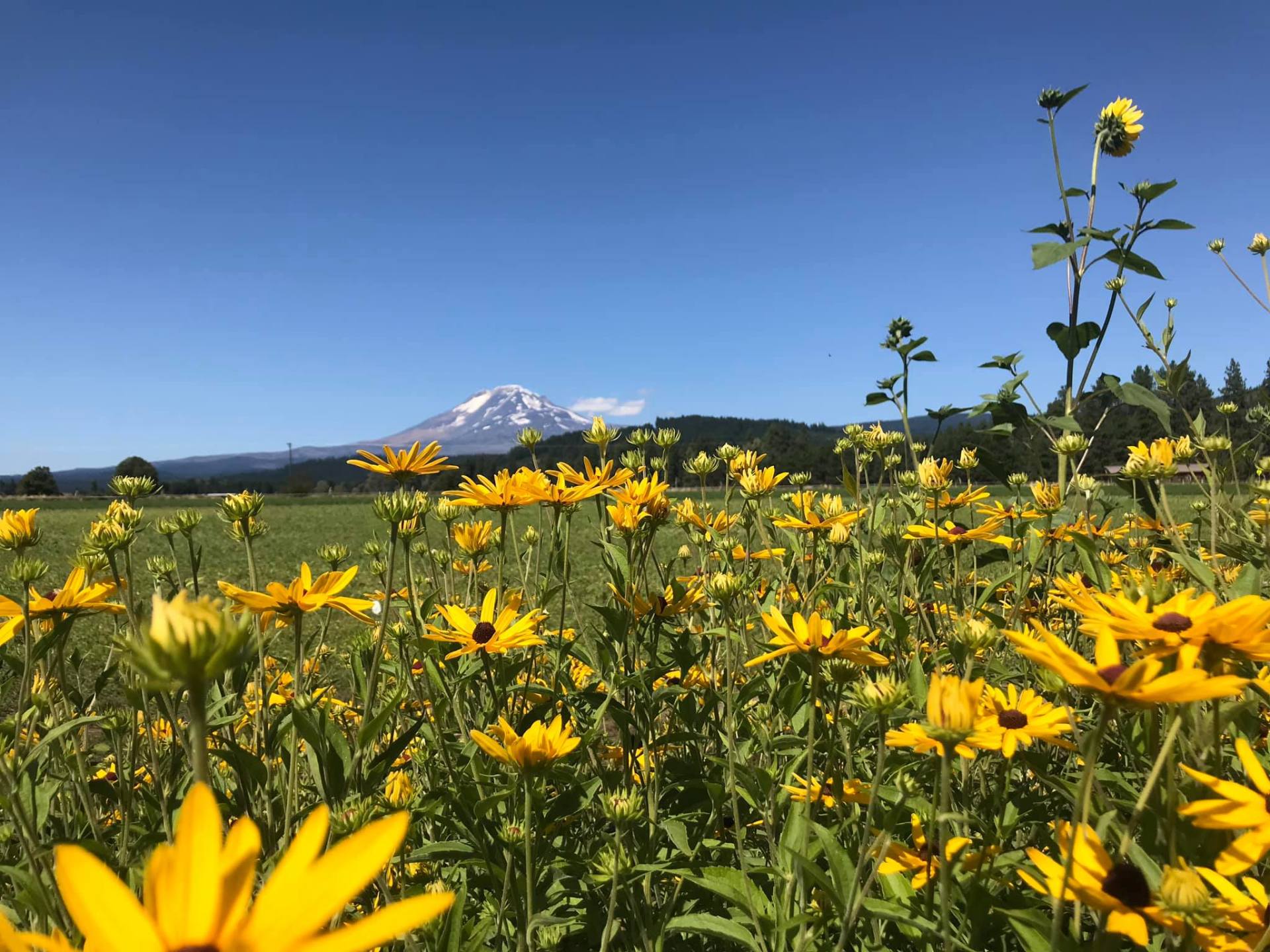
Blessed New year! I feel humbled by the support I have received from my local community over the last year and am sew grateful my heARTwork resonates with others. Big thanks to everyone who has made a purchase, passed along my business card, or simply stopped by my booth at markets to learn about hemp and Shungite. Now that the holidays are over - I have finally taken the time to create a website! I try my very best to provide more than enough detailed information about my products and process at all possible opportunities - and have recently learned Etsy is not the best platform to do that on. I will be leaving my Etsy shop open for custom orders, and will be offering one of a kind and limited items on this website, as well as sharing more natural dye experiments and projects in my blog. The prices on Etsy will be slightly higher to reflect the higher fees associated with using Etsy. Thanks for overstanding! love and light, Morgan
